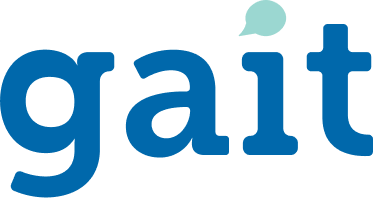• Imaging studies yield a potential core marker for reading problems, underscore neurological basis of difficulties
Researchers have additional evidence that reading problems are linked to abnormal sound processing, thanks to high-precision pictures of the brain at work. In a recent study, when children without reading problems tried to distinguish between similar spoken syllables, speech areas in the left brain worked much harder than corresponding areas in the right brain, whose function is still unknown. But when children with dyslexia made the same attempt, those right-brain areas actually worked harder, going into overdrive after a brief delay. These findings appear in the October issue of Neuropsychology, which is published by the American Psychological Association (APA).
Psychologists at The University of Texas Health Science Center at Houston targeted the suspect brain areas by isolating speech-processing sites from sites involved with other aspects of language, such as memory and meaning. As a result, they believe their research contributes to the identification of a central marker of the deficit that makes it hard for people with dyslexia to process similar but different sounds — in both spoken and written form. The results parallel prior evidence gathered by the Houston team that brains of children with dyslexia also respond abnormally during reading.
The researchers studied the brain activity of 12 children with and 11 children without dyslexia during a simple speech perception task. The children were 8-12 years old.
Magnetoencephalography (MEG), a non-invasive, high-resolution form of functional imaging, highlighted precise activity in participants’ left and right temporoparietal (TP) language areas while the children discriminated between spoken pairs of syllables, such as /ga/ and /ka/. This
kind of task, known as phonological processing, is fundamental to acquiring reading skill. The temporoparietal areas are on the surface in the back of the brain.
While distinguishing between sounds, the non-impaired readers showed more relative activity in the speech part of the left TP area. During the same task, after a slight delay, impaired readers showed a sharp peak of relative activation in corresponding (but functionally mysterious) areas on the right side. The poorer the child’s performance in phonological processing, the more their right brains “lit up” during that task.
The results, says co-author Joshua Breier, Ph.D., suggest that children with dyslexia “may lack the predominant involvement of left-hemisphere auditory association cortices” shown by children and adults without reading problems.
Dyslexia may affect up to 17 percent of the school-age population and can continue into adulthood. Reading experts have long suspected that many reading problems, especially in decoding letter sounds, are rooted in the brain and have more to do with sound than sight. Brain imaging studies have confirmed that suspicion and helped to put to rest any notion that dyslexia, although it can make a child feel “stupid” and be a problem in school, reflects visual problems or a lower overall intelligence.
“The neurological deficit appears to be specific to very restricted areas of the brain,” says Breier, “and can occur in children with a wide range of general intellectual function.”
Such findings are helping to shape national education policy. Co-author Jack Fletcher, Ph.D., points out that most states, following federal guidelines, have for decades used a discrepancy between IQ and reading tests to determine eligibility for special education in the learning disability category, which accounts for more than half of all students in special education.
However, several national bodies have, in the past year, proposed allowing states to use alternative means of establishing eligibility. Legislation is in progress. Breier explains that given the research, “The use of IQ in reading disability definitions, at least for these children, is not appropriate.” Adds Fletcher, “It’s poor reading that’s important.” And, poor reading can improve. “The present study shows that reliable brain correlates can be identified in individual children,” Breier points out. Given that effective teaching changes brain activation patterns, he says, “the brain in people with reading difficulties is responsive to intense intervention.”
Article:
Breier, J. (2003). Abnormal Activation of Temporoparietal Language Areas During Phonetic Analysis in Children with Dyslexia, by Joshua I. Breier, Ph.D.; Panagiotis G. Simos, Ph.D.; Jack M. Fletcher, Ph.D.; Eduardo M. Castillo, Ph.D.; Wenbo Zhang, Ph.D.; and Andrew
C. Papanicolaou, Ph.D.; The University of Texas Health Science Center at Houston;
Neuropsychology, Vol. 17, No. 4.


Recent Comments